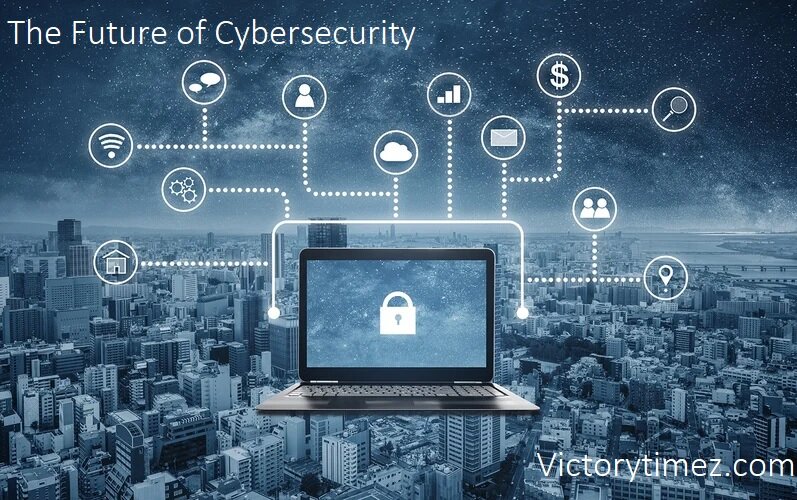
In an increasingly digital world, cybersecurity has become a critical aspect of safeguarding our personal, corporate, and national information. The following article provides an in-depth look at the evolution of cybersecurity, exploring its history, current state, and future directions
1. The Origins of Cybersecurity
- Early Days and Simple Threats
Cybersecurity as a field began to take shape in the 1970s, with the advent of the first computer viruses and worms. Early threats were relatively simple and primarily focused on disrupting systems or accessing unauthorized information. The first significant instance of a computer virus was the “Creeper” virus, which appeared in the early 1970s. It has designed to move across ARPANET, displaying a message that read, “I’m the Creeper, catch me if you can!”
The Rise of Malware
By the 1980s, the complexity of malware increased with the development of more sophisticated viruses and worms. The “Brain” virus, created in 1986, has considered one of the first true computer viruses. It targeted IBM PCs and has designed to infect floppy disks, whichthe primary data storage medium of that era.
2. The Expansion of Cyber Threats
- The Internet Boom and New Vulnerabilities
The 1990s saw the rise of the internet, which dramatically expanded the scope of cybersecurity threats. The proliferation of online communication and commerce introduced new vulnerabilities. High-profile incidents such as the “Melissa” virus in 1999, which infected Microsoft Word documents, highlighted the need for more robust security measures.
The Emergence of Cybercrime
As the internet became more ingrained in daily life, cybercrime evolved from pranks to serious criminal activity. The late 1990s and early 2000s saw the emergence of organized cybercriminal groups and the development of sophisticated tools for cyberattacks, including phishing schemes and distributed denial-of-service (DDoS) attacks.
3. Modern Cybersecurity Challenges
- Advanced Persistent Threats (APTs)
In the 2000s, the focus shifted to more advanced and persistent threats. APTs has sophisticated, long-term targeted attacks that often involve state-sponsored actors or well-funded organizations. These threats have designed to infiltrate systems stealthily and remain undetected while exfiltrating sensitive data over time.
Ransomware and Zero-Day Exploits
The rise of ransomware attacks, where malicious software encrypts a victim’s data and demands payment for its release, has become a significant concern. Additionally, zero-day exploits—vulnerabilities in software that are unknown to the vendor—pose severe risks as they can be exploited before a patch is available.
4. The Current Landscape
- Cybersecurity Frameworks and Standards
To combat evolving threats, various cybersecurity frameworks and standards have been developed. The NIST Cybersecurity Framework and ISO/IEC 27001 has among the most widely adopted, providing guidelines for managing and mitigating cybersecurity risks.
Emerging Technologies and Threats
The rise of emerging technologies such as artificial intelligence (AI) and the Internet of Things (IoT) introduces new cybersecurity challenges. AI can used both to enhance security measures and to develop more sophisticated cyberattacks. The IoT expands the attack surface by connecting numerous devices, each potentially vulnerable to exploitation.
5. The Future of Cybersecurity

- Increased Focus on Cyber Resilience
Looking ahead, the focus in cybersecurity is shifting towards resilience—ensuring that organizations can recover quickly from attacks and minimize damage. This includes investing in incident response planning, regular security assessments, and employee training.
Collaboration and Global Efforts
Cybersecurity has increasingly recognized as a global issue requiring international cooperation. Governments, private organizations, and cybersecurity professionals are working together to share threat intelligence, develop best practices, and strengthen collective defenses.
The Role of Quantum Computing
Quantum computing, still in its nascent stages, has the potential to both revolutionize cybersecurity and create new vulnerabilities. While quantum computers could break current encryption algorithms, they also promise advancements in secure communication and cryptographic techniques.
Conclusion
The field of cybersecurity has evolved dramatically from its early days, adapting to ever-changing technologies and threats. As we continue to advance into an increasingly digital and interconnected world, cybersecurity will remain a critical component of protecting information and ensuring the integrity of systems across all sectors. The future of cybersecurity will depend on innovation, collaboration, and a proactive approach to emerging threats.
- Feel free to adjust or expand upon any sections to better suit your needs!